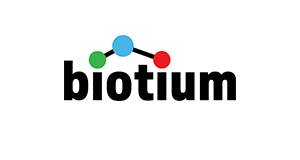CDX2 (GI Epithelial Marker) (CDX2/2951R), CF740 conjugate, 0.1mg/mL
CDX2 (GI Epithelial Marker) (CDX2/2951R), CF740 conjugate, 0.1mg/mL
SKU
BTMBNC742951-100
Packaging Unit
100 uL
Manufacturer
Biotium
Availability:
loading...
Price is loading...
Description: The intestine-specific transcription factors CDX1 and CDX2 are important for directing intestinal development, differentiation, proliferation and maintenance of the intestinal phenotype. CDX2 protein expression has been seen in GI carcinomas. Anti-CDX2 has been useful to establish GI origin of metastatic adenocarcinomas and carcinoids and is especially useful to distinguish metastatic colorectal adenocarcinoma from lung adenocarcinoma. However, mucinous carcinomas of the ovary also express CDX2 protein. It limits the usefulness of this marker in the distinction of metastatic colorectal adenocarcinoma from mucinous carcinoma of the ovary.Primary antibodies are available purified, or with a selection of fluorescent CF® Dyes and other labels. CF® Dyes offer exceptional brightness and photostability. Note: Conjugates of blue fluorescent dyes like CF®405S and CF®405M are not recommended for detecting low abundance targets, because blue dyes have lower fluorescence and can give higher non-specific background than other dye colors.
Product origin: Animal - Oryctolagus cuniculus (domestic rabbit), Bos taurus (bovine)
Conjugate: CF740
Concentration: 0.1 mg/mL
Storage buffer: PBS, 0.1% rBSA, 0.05% azide
Clone: CDX2/2951R
Immunogen: Recombinant fragment (around aa150-249) of human CDX2 protein (exact sequence is proprietary)
Antibody Reactivity: CDX2
Entrez Gene ID: 1045
Z-Antibody Applications: IHC, FFPE (verified)
Verified AB Applications: IHC (FFPE) (verified)
Antibody Application Notes: Higher concentration may be required for direct detection using primary antibody conjugates than for indirect detection with secondary antibody/ELISA: 2-4 ug/m for coating order Ab without BSA/Immunohistology (formalin): 1-2 ug/mL for 30 minutes at RT/Staining of formalin-fixed tissues requires boiling tissue sections in 10 mM Tris with 1 mM EDTA pH 9.0 for 10-20 minutes followed by cooling at RT for 20 minutes/Optimal dilution for a specific application should be determined by user
Product origin: Animal - Oryctolagus cuniculus (domestic rabbit), Bos taurus (bovine)
Conjugate: CF740
Concentration: 0.1 mg/mL
Storage buffer: PBS, 0.1% rBSA, 0.05% azide
Clone: CDX2/2951R
Immunogen: Recombinant fragment (around aa150-249) of human CDX2 protein (exact sequence is proprietary)
Antibody Reactivity: CDX2
Entrez Gene ID: 1045
Z-Antibody Applications: IHC, FFPE (verified)
Verified AB Applications: IHC (FFPE) (verified)
Antibody Application Notes: Higher concentration may be required for direct detection using primary antibody conjugates than for indirect detection with secondary antibody/ELISA: 2-4 ug/m for coating order Ab without BSA/Immunohistology (formalin): 1-2 ug/mL for 30 minutes at RT/Staining of formalin-fixed tissues requires boiling tissue sections in 10 mM Tris with 1 mM EDTA pH 9.0 for 10-20 minutes followed by cooling at RT for 20 minutes/Optimal dilution for a specific application should be determined by user
| SKU | BTMBNC742951-100 |
|---|---|
| Manufacturer | Biotium |
| Manufacturer SKU | BNC742951-100 |
| Package Unit | 100 uL |
| Quantity Unit | STK |
| Reactivity | Human |
| Clonality | Recombinant |
| Application | Immunohistochemistry |
| Isotype | IgG |
| Host | Rabbit |
| Conjugate | Conjugated, CF740 |
| Product information (PDF) | Download |
| MSDS (PDF) | Download |

 Deutsch
Deutsch







